Previously: Elektra festival – part 1
The Elektra festival which closed a few days ago in Montréal might have a website design which i find difficult to explain in 2010, but that didn’t prevent its programme to be remarkable. The agenda of live events was particularly outstanding with performances by Aoki Takamasa and Edwin van der Heide for example. I wish i could have seen Blake Carrington‘s Cathedral Scan which scans, analyzes and reveals through sound the architectural structure of the buildings (usually gothic cathedrals) where the event takes place. I missed it courtesy of my inseparable friend the jetlag. What no desynchronosis could prevent me from seeing though was the festival’s selection of installations and sculptures.
Exhibitions were all over the city center and that’s probably one of the major strengths of Elektra. Its collaboration with fine art galleries and art centers helped spread media art outside of its tightly-knit family and bring it to a larger audience. I’m going to highlight the artworks i found most interesting – either for their quality or simple because i had not written about them before. Many of them could be found at the city’s hotspot of contemporary art: the Belgo building.
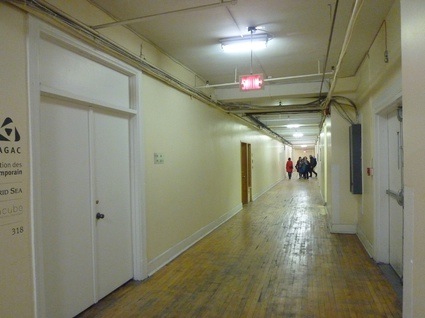
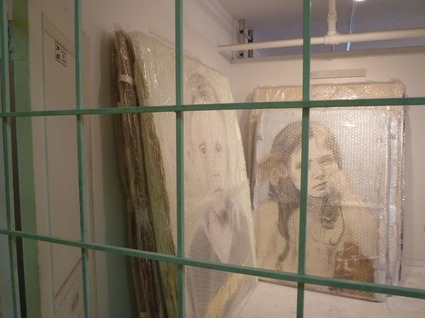
The exterior of the former industrial building doesn’t betray its conversion to a place of glam and culture. Facade is rather plain. Ground floor is all blah shops and Starbuck’s coffee. But if you get inside and hop on one of the freight elevators, you’ll soon realize that Belgo is packed, floor after floor, with white wall galleries, dance studios teaching capoeira, and photo studios
My first stop was at the Galerie PUSH to seeZimoun‘s quietly buzzing 216 prepared dc-motors
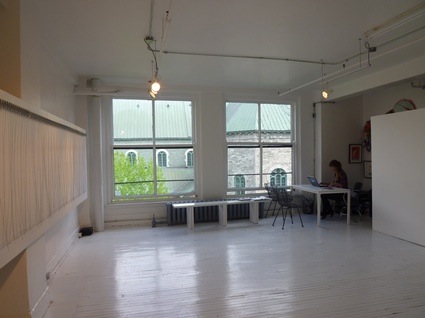
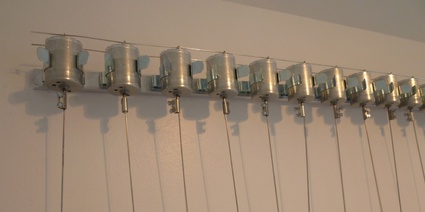
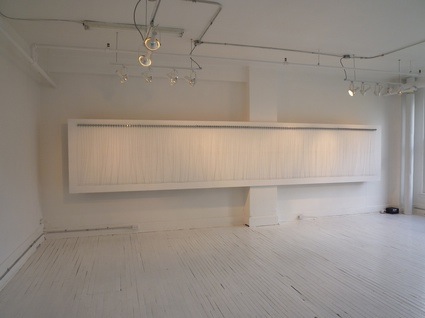
216 small motors aligned against a white framed wooden canvas, activate a rain of metallic wires. The ensemble functions as an instrument both artificial and organic in nature.
Next stop was for the Joyce Yahouda Gallery to see Pascal Dufaux’s photographic automaton. Le cosmos dans lequel nous sommes (The cosmos in which we are) captures and transcribes images and video-kinetic sequences in real time, following a continuous hypocycloidal motion, inside the gallery. The images are projected on one of the walls of the room. The artist is also showing a series of stills taken with the automaton.
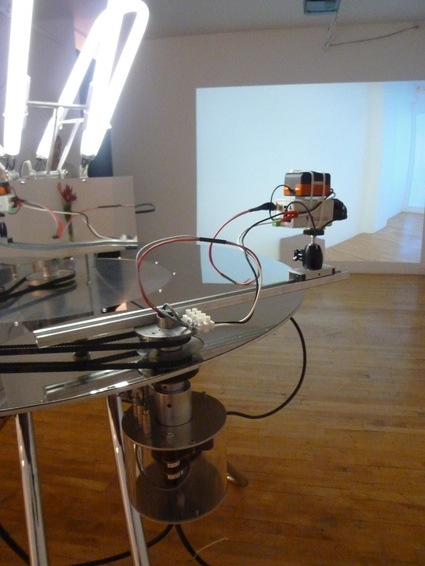
During his presentation at the festival, the artist explained how the work is Inspired by the now almost ubiquitous surveillance cameras. According to Dufaux, surveillance cameras have something in common with the daguerreotypes of the 19th century: both have been a bit of a shock to the public because it confronted them with a reality which had never been so blunt before. CCTV images reflect a rough and unfiltered reality. Le cosmos dans lequel nous sommes offers an experience of visuality where mediatized and immediate perceptions play with one another. The spectator and location become the object and subject of a singular “mise en abyme”.
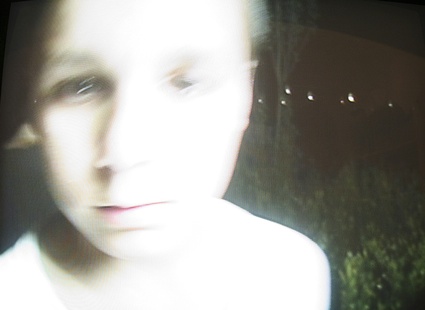 Drop frame, Visage dans la nuit, 2009
Drop frame, Visage dans la nuit, 2009
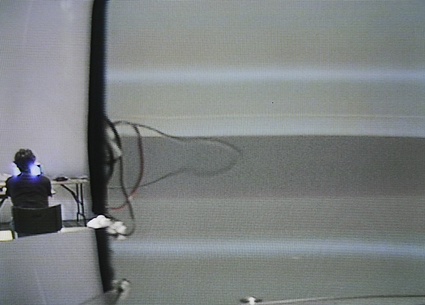 Drop frame, Dos aux miroirs, 2009
Drop frame, Dos aux miroirs, 2009
Dufaux comes from a fine art background which probably explains why Le cosmos dans lequel nous sommes functions so well as a sculpture.
